Congratulations to the following readers who won in my giveaway–Karen Reynolds, Jenise, Julie, Jessica B., Amy, Dina and Emily S. An email with the code has been sent to you directly!
Is it me, or is fluency one of those “specialized” areas of our field that many general practitioners try to avoid? It doesn’t show up with anywhere near the frequency of articulation or phonological processing disorders or that wide ranging beast that is language disorder/delay so if you don’t feel comfortable with it you likely don’t get much opportunity to remedy that.
I had a clinical supervisor who was passionate about fluency so we got a lot of practice with this in our university clinic. In fact, so much so that I was inspired to create a poster session for ASHA with a fellow grad student during our final year. (FYI awesome experience). And I’ve been delighted to either confer on or pick up a few clients in the past couple of years.
Here are a handful of the activities I use with regularity (***many of these are inspired by or adapted from the Stuttering Foundations DVD series: Practical Ideas for the School Clinician)
1. Speech Helpers: I almost always start with a discussion of the major speech helpers–lips, tongue, voice box and lungs–and their roles. I stress the importance of their being able to move freely so they can do their jobs. Then we make a speech helper (wo)man.
2. Stretchy speech: I like to use Silly Putty as a visual demonstration of streeeeetchy speech. Not only is it great fun to squish, but a slow, smooth pull gives you nice long strings. An abrupt pull makes a snapping sound and a short, angular break.
3. Tell me the truth: I try to address a lot of facts. Depending on the individual child, this might include:
Everyone stutters a little.
Worrying about my stutter makes it worse.
I have choices about my speech.
I try to guide kiddos to these truths rather than dictate them. The child writes them down, one per notecard, and we keep them in an envelope for frequent reference and review. They also become great sentences to practice techniques, whether that be easy onset, deliberate stuttering or phrasing.
4. Wendi’s Magical Voice: I did a post on this back in the fall so I’ll just say it’s an easy read with good jumping off points for feelings and attitudes.
5. I created game mats for Jenga after seeing inspiration on Pinterest. You can pick up my freebie, or check out the entire set here.
6. Apps: I have both Speech4Good and the new Fluently app (***update 10/22/14 the Fluently app is no longer available, but Speech4Good still is!) which are awesome. It’s great for kiddos to have visual feedback for easy onsets and, depending on the child, try some DAF.
I’d love to hear your tips or go-to activities. And, great news, I have a few giveaways as encouragement! Leave your idea in comments (brief is fine, so is lengthy) and I’ll choose SIX lucky readers at random. Four readers will receive a copy of Speech4Good lite, one will receive Fluently and one will receive a worksheet packet for Wendi’s Magical Voice. (If you don’t have an app compatible device and win, I’m happy to send you a download for the worksheets instead.). Winners will be randomly drawn and announced on March 1, 2013. You must enter by midnight EST on February 28, 2013 to qualify.
***Additional note: The Stuttering Foundation is currently offering a 50% discount offer for Better Speech and Hearing Month (May 2014). Use code: BETTER (case sensitive) The DVD series I mention is
ABSOLUTELY worth considering.


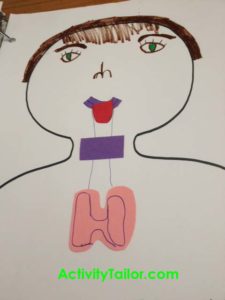
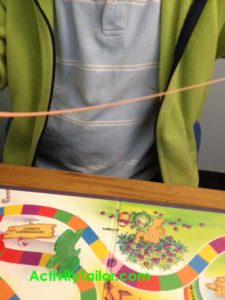
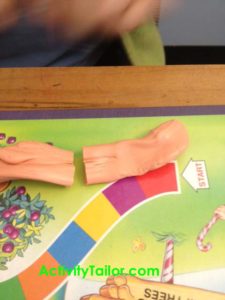
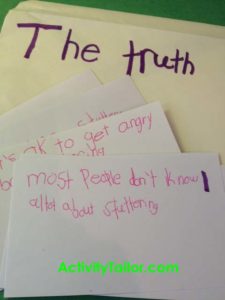

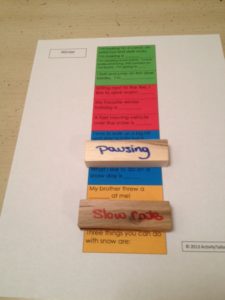
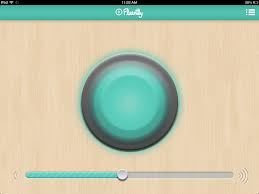




This Post Has 29 Comments
Always looking for good ideas to address fluency. Thanks.
I would love some field tested fluency ideas!
Hi Kim,
Thanks for blogging on fluency and sharing your tips. As a clinical supervisor, I find that working with fluency is a mental-emotional obstacle for the grad clinicians. Everything positive and encouraging with creative ideas is another source, especially on top of my reassurances and instruction.
Great references! I, too, am always looking for helpful ways to treat students who stutter. Thank you!
I don’t have many fluency clients in the school at the present but I am always interested in information I can give to co-workers, parents and students when asked about stuttering. I am also interested in having information I can pull from. It is not really an area I am that comfortable treating but I have experienced success in the past with students I have worked with using an eclectic approach. Thanks
I totally stole/borrowed this idea from somewhere but it has been so long ago that I don’t remember who to credit. I will help my fluency students draw and color a Tool Box and as we work through and learn each fluency technique we draw, color, cut out and label that “Tool” and add it to his or her Tool Box. So they might have a hammer that says “Slide” or a screwdriver that is labeled “Easy Onset”. It provides a nice visual reminder of the techniques they can use.
I love the silly putty idea. I also use a rubber band to show how to “stretch” words. Since I work with prechoolers, a turtle puppet is helpful to contrast “slow” and “fast” speech.
I LOVE the Silly Putty idea. I talk about our ‘Fluency Rules” which are 1. speck slowly and 2. say each word once time. I also do a lot of modeling of both speech speech and bumpy speech. The kids love to catch me using bumpy speech. Once they are good at that, I have them try to catch themselves.
A great place to learn more about working with kids/teens who stutter from some of the top fluency therapists and trainers is Camp Shout Out. We are a traditional summer camp for kids ages 8-18 as well as a clinical training program for SLPs and Graduate Students. We really focus helping everybody become great communicators in a hands-on natural and fun fashion. The program was started by families and SLPs who knew there needed to be more options for our young people who stutter. It is run totally by volunteers and held in Michigan in August. Participants attend from all over the world.
Thanks for a great post about addressing fluency. I LOVE the silly putty idea, and will have to try it with my next student working on fluency.
I’m a first-year SLP-Assistant working K-5 in the schools. Silly putty is a great reinforcer and visual–I’ll have to use that! I like to use conversation bingo with my kids with carrier sentences about their feelings, and I have them decide which 2 techniques they will focus on when giving their Q & A’s (eye contact, pausing, easy onset, etc.) Sometimes they have good discussions and it takes 4 sessions to finish a bingo board!
I am taking my second literacy class as an Elementary Education major this year, and currently and working with a student who struggles with fluency. Thank you for all the advice. Definitely going to look into the references you mentioned.
Working with students who stutter is my favorite, favorite thing! I like the silly putty visual. A lot of the things you do are included in the Focus on Fluency kit. I like to have the students desensitize to disfluencies by playing around with our speech. We play games challenging each other to do monster stutters, baby stutters, robot stutters, etc. I also play a bell game where we try to catch each other in disfluent moments (voluntary or involuntary). One of my favorite resources is the Stuttering Foundation book about working on attitudes and emotions. That’s something I try to address as equally as techniques.
My largest challeng has been with an older school aged children. I have had issues with confidence, and acceptance of techniques, when transitioning to daily living environments. The child who first comes to mind, was extremely accurate and consistent in a small classroom in his school, but would not consider completing treatment in his own personal classroom empty or attempt to utilize the techniques with cues in the classroom during the day. We were at that point for some time, he would not allow the transition. We tried all sorts of methods to demonstrate his accuracy and spoke with him at length about why he didn’t want to transition. I believe it had something to do with his preception that he still sounded different than everyone else when using them. He did not respond to audio or video tapes. He told me at least everyone was use to him stuttering, what would happen if they detected the techniques. He could not be convinced to try. I am always looking for new techniques.
I have a program that I use called, “Speak Freely” that has a workbook and cd’s and dvd’s to use to show the kids what therapy looks like in each session. It seems fairly effective and makes it easier for the SLP to explain what’s supposed to be done. I’ve got the “Fluently” app, but it hasn’t worked out very well for my client, so far… I’d love to try the “Speech4Good” app or anything else! I’ve got a first grade client and a 6th grade client and will have a few more next year.
Thank you for these ideas, I love the silly putty one! I will try this with one of my students.
Grace is a beautiful concept that even the toughest among us must rely upon at times….Ok, daily! This is a great approach to my middle school student who stutters freely as she interrupts class with comments and jokes. This is unlike my other students who prefer to control stuttering by not talking. Both extremes are not what we are aiming for, but in each case the more grace the teachers can give – the better! Thanks for sharing your insights and experiences.
Thanks for the ideas and resources! I wish I had your experience in grad school with stuttering!
I love these ideas! I graduate this year and am so excited to start my CFY.
I love to help them with pseudo-stuttering because it helps teach them that they can have more control over their speech. My students usually love to play with this and I tell them they can stutter as little or as much as they want in the safety of my room. It seems to help them relax and helps them realize they can be in control of some things. Counseling is also such a huge portion of therapy and helping students in that regard is so vital. Also, when they get success to use strategies with either peers, teachers or assistants in the schools give their ego a huge boost!! Great post Kim!
I neglected to mention in my previous response that I had the opportunity to attend a day-long stuttering seminar with Scott Yaruss from U of Pittsburgh (co-author of OASES & other therapy materials from http://www.StutteringTherapyResources.com ) who outlined a very practical treatment plan for therapy. The importance of enhancing fluency balanced with the acceptance of stuttering so the client can still effectively communicate, even while stuttering, were key elements of Yaruss’ approach. This approach seems sensible, and allow for the opportunity of “grace” which may be overlooked otherwise.
Over my 30 plus years in the field, I have had very few dysfluent clients. Each time a new one is on my caseload, my anxiety level increases dramatically! Maybe this is akin to what they feel when they need to speak – especially to a group or to new people. I took lots away from this post and the related one. Thanks
I am loving reading everybody’s fluency treatment strategies. I have a middle school student who just began therapy this year for stuttering. I am struggling with what else to do with him besides “easy onset”. Fluency is one area where I feel I lack knowledge…
Thanks for your insights and honesty. With little people who stutter or clutter I like to teach the concept of speech rate with a silly “driving” game. I set up 3 “driving zones”. In each is a different form of transport – a ‘too fast’ sports car, a ‘just right’ SUV/family car, a ‘really slow’ tractor. We move between the zones brainstorming ideas about speed and rate before trying to create speech rate patterns to match our zones. Kids who love the “Cars” movies love to place the characters out of the movie in the zones they think they sound like.
What a timely post! I’ve recently added some fluency kiddos to my caseload of varying ages and have been searching for apps. You are so right about fluency therapy requiring a listening, unjudgemental ear. The one aspect I struggle with is carryover. My kiddos get so comfortable and fluent, but it is a struggle getting transfer of skill. I love the challenge, though. I’m really excited about using the iPad to help with this: FaceTime, Skype, etc. Thank you for the wonderful post and the giveaway 🙂
I also use th silly putty idea, young kids love it! I also have stuffed snail that I use to help cue for slow/ stretched speech. Will definitely check out the iPad apps, thanks for the info!
Thanks for these ideas, I’d love more fluency tips
I’m looking forward to trying the silly putty as an alternative to my usual “stretchy” toy – a small slinky. Another good visual I use to demonstrate that “relaxing” speech muscles is effective in decreasing stuttering, is a “chinese finger trap.” With a finger inserted at each end, the kids quickly realize that pulling and struggling will not remove the trap, and the only way to get that thing off their fingers is to stop forcing.
I’m using the Speak Freely program also with middle schoolers. They seemed to get somewhat bored with it and I was hoping to find something more motivating for them. We’ve played with the Talking Tom apps which make them feel more comfortable, especially when we’ve worked on purposeful stuttering.
Comments are closed.